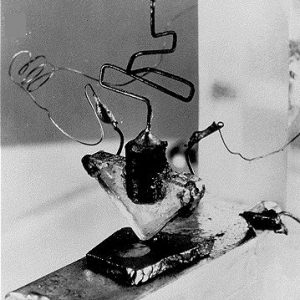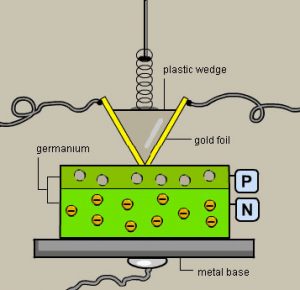The education system in the U.S. applies a one-size-fits-all approach. Everyone is expected to to do K-12 and go on to college. This is what kids are told from first grade on and they are told “everyone can and should get a college education”. K-12 education is aimed solely at college prep and I submit that this whole approach is wrong and at the root of many social problems in this country. At some point in the early 20th century, Americans got the idea that everyone’s goal should be college. This is misguided and ends up harming a large percentage of kids, leaving many of them at age 18 with a diploma in their hands, no marketable skills, and the sense that they are a failure. Since kids are told all along that college is the way to go for everybody, the ones who don’t make it feel like failures because they didn’t make it to college “like everyone is supposed to”. These kids’ self-esteem is accordingly low.
Kids who don’t make it to college are often condemned to an unfulfilling life of relative poverty and dependence, working at a worthless job that provides no satisfaction or sense of achievement–the stereotypical hamburger flipper. If they have kids of their own they can’t survive without food stamps because the unskilled jobs they can get, assuming they can get a job at all, pay poverty level wages. For some, upward mobility consists of getting into a life of crime, selling drugs, or other activity that brings in a decent amount of income and such alternatives don’t appear so bad “because they are a failure or a dropout anyway”. None of this should happen. The concept that everyone needs to go to college is nonsense–a pipe-dream conjured up by educators with little sense of reality or human nature. The problem I describe would not happen if the educational system took into account the reality that not everyone needs a college education nor is everyone suited for a college education. What everyone needs is a good job and the self-respect that comes from having and performing a good job. For some this means college, for others it definitely does not.
My suggestion is to copy the European educational system. At 12 or 13 years of age, kids are given an aptitude test. If they pass the test, they proceed to Hochschule and Universität (high school and university). If they don’t pass they go to a trade school, and trade school in Europe is nothing like trade school in the United States. It is interesting, engaging, challenging, and fulfilling. Most of the training takes place in industry and small business, not in a school. Almost all of the kids’ schooling takes place in a real work environment so when they graduate they really do know their trade and usually get hired by the company that trained them. What’s more, they get paid in the process. This is how it worked in Germany in the 60’s and 70’s when I was there, and again in the 90’s when I was there. Germany and Austria are still running the same system today.
Out of such a system there are no “dropouts”. You don’t end up with high school graduates who still know nothing, and more importantly, have no skills at all. I have met 35 year old men (white guys) in the United States who deal drugs and constantly get into trouble, and in talking to them I learn that they have a diploma but no skills whatsoever, have never actually done anything productive in their lives, have never built or made anything. Some have never even used a screwdriver or a power tool–nothing. Their self-esteem is zero. They readily admit that they are useless and only know how to steal and deal. There’s something extremely wrong with an education system that turns out people like that. And these are men who had opportunity, not poor “ghetto kids”. Imagine how it is for a ghetto kid, raised by parents who are just as I describe above, who live on public assistance and who are surrounded by friends and family who are the same. How is a kid like that to even know of a better way unless the educational system provides it to him or her? Our “ghetto kid” is likely going to drop out of high school, and even if he or she graduates will likely not make it to college, and will be in the situation I described earlier.
Yes, I know that the German / Austrian school regime would never fly in the U.S. The political correctness people would raise holy heck about it being discriminatory. Let’s see if that’s so. The fact is that not everybody is university material. You can’t push everybody through the same mold of a high school education that is aimed at college prep. Some of us are bricklayers, stonemasons, carpenters, dental technicians, mechanics, artisans, musicians, plumbers, electricians, etc. Not everybody is cut out to be a physicist.
The way that you educate for those trades is to involve and obligate small businesses. Of course, it goes without saying that the rules and requirements on the small businesses who teach are very strict, they are closely monitored, and they have no choice. All businesses above a certain fairly small size, like ten employees, must take on apprentices for training. It’s part of the cost of doing business in Germany and Austria. From what I’ve seen of this system, up close and personal, it works great. I have seen it, talked with business owners about it, and I’ve talked with and sometimes worked alongside the kids in training. (I speak German) I know it works and it’s been working for 100 years. This is not an unproven idea that I cooked up with my academician friends, it’s a tried and proven system that could be studied and imitated in the United States.
But like I said, I’m sure U.S. educators will rail at my suggestion here, calling it discriminatory. Meanwhile, our present system that is supposedly non-discriminatory continues to turn out legions of high school “graduates” that can’t read above a fourth grade level, can’t find their own country on a map of the world, and have no marketable skills. So much for an American’s “right to an education”. I submit that our present education system does discriminate. It discriminates against those who are not college material and leaves them at age 18 with nothing useful.






Recent Comments